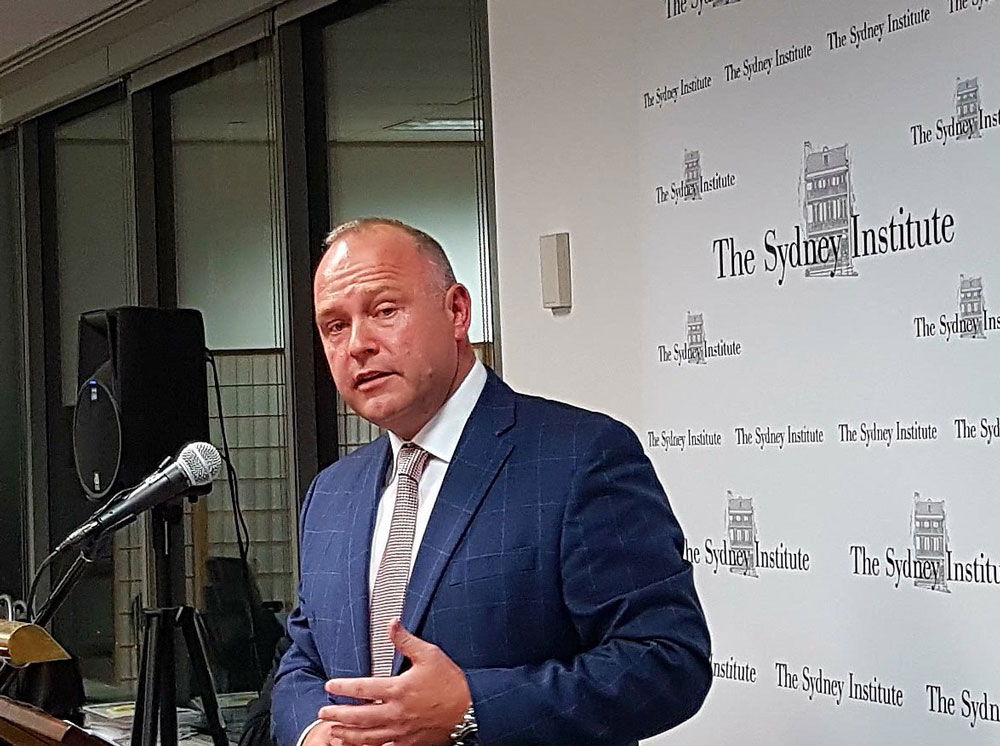NSW Catholic schools saved taxpayers $480 million in 2018

CSNSW Chief Executive Officer Dallas McInerney. Photo supplied.
Catholic Schools NSW (CSNSW) has released a report showing its schools saved taxpayers almost half a billion dollars last year and will save more than $2.5 billion by 2022.
The report is the first in a series of three volumes outlining the benefits of the NSW Catholic schools sector, CSNSW Chief Executive Officer Dallas McInerney said.
“Ernst & Young (EY) has independently calculated that under current funding arrangements, the operation of almost 600 Catholic schools in NSW resulted in a net saving in recurrent government spending of $480 million in 2018.
“This would rise to $2.56 billion in cumulative savings in the five years to 2022,” Mr McInerney said.
“EY’s modelling also found that if the NSW Government were required to educate all students currently enrolled in NSW Catholic schools, it would need to spend up to $7.9 billion in capital to develop the necessary schools.”
Mr McInerney said some 90% of the funding used to build or upgrade Catholic schools – which educate one in five NSW students – currently comes from private contributions, parents and families.
“This report shows that rather than drawing funds away from government schools, NSW Catholic schools actually free up funding for governments to invest in public schools and other areas.”
Mr McInerney said governments partially fund Catholic schools to ensure they remain affordable to most NSW families and share the load of educating the state’s almost 1.3 million students.
The basic annual cost of a school education, estimated annually by the Federal Government, is more than $11,000 per primary student and more than $14,000 per secondary student in 2019.
“Without government funding support, many families could not afford the full cost of a Catholic education for their children and would need to enrol them in public schools, resulting in a significantly increased cost burden for taxpayers.
“The twin benefits of this funding model are that governments reduce their overall financial obligation while supporting the right of parents to choose an education that reflects the values they wish to instil in their children – a long settled bipartisan policy in Australia.”
Mr McInerney said the benefits of parallel school sectors are many and will be the subject of a three- volume series of reports, The Case for Catholic Schools.
“Volume 1 highlights the economic contribution made to NSW by Catholic education, while illustrating the scale of its operation across the state. The full report of Volume 1 is available online.”
There are almost 600 Catholic schools in NSW, educating more than a quarter of a million students and employing some 30,000 teaching and other staff.
Source: Catholic School NSW Media Release



Congratulations on an excellent paper! It should be noted that in the ACT Schools the local Territory’s grant given to each child, primary or secondary, is less than the amount given in any other State or Territory. It has often been argued that all parents should be given a “Voucher” to spend at the school of their choice for their children.
This article highlights that the government could not afford to educate all children. Non government schools play a role in this process. What isn’t considered is that invariably parents use Catholic education as a means of cheaper private education. Their facilities are then used to attract students to the detriment of government schools. The money allocated to Catholic schools can then be used on programs/ facilities with which government schools cannot compete. Let’s present a more balanced view on what Catholic schools do with their government subsidies.